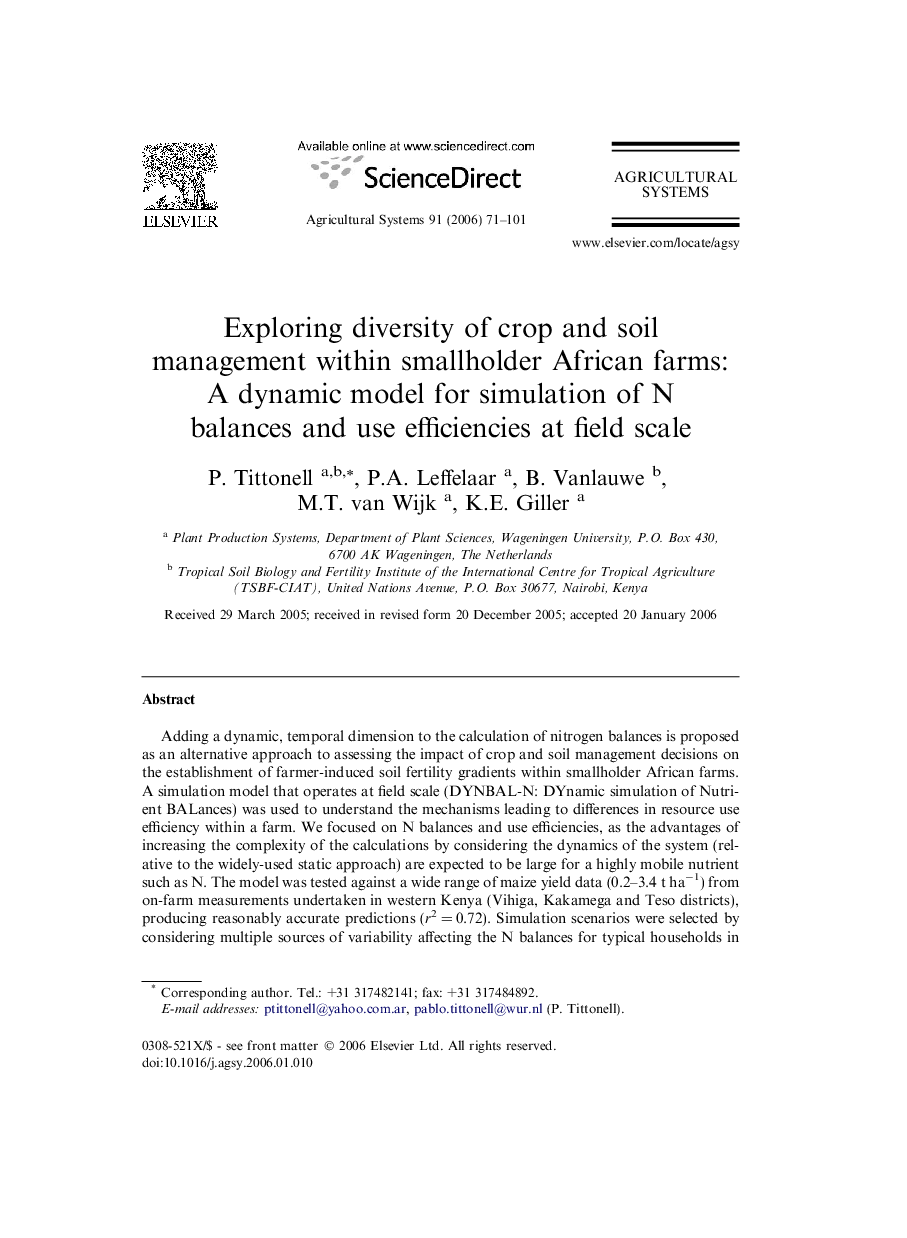| کد مقاله | کد نشریه | سال انتشار | مقاله انگلیسی | نسخه تمام متن |
|---|---|---|---|---|
| 4492016 | 1623273 | 2006 | 31 صفحه PDF | دانلود رایگان |

Adding a dynamic, temporal dimension to the calculation of nitrogen balances is proposed as an alternative approach to assessing the impact of crop and soil management decisions on the establishment of farmer-induced soil fertility gradients within smallholder African farms. A simulation model that operates at field scale (DYNBAL-N: DYnamic simulation of Nutrient BALances) was used to understand the mechanisms leading to differences in resource use efficiency within a farm. We focused on N balances and use efficiencies, as the advantages of increasing the complexity of the calculations by considering the dynamics of the system (relative to the widely-used static approach) are expected to be large for a highly mobile nutrient such as N. The model was tested against a wide range of maize yield data (0.2–3.4 t ha−1) from on-farm measurements undertaken in western Kenya (Vihiga, Kakamega and Teso districts), producing reasonably accurate predictions (r2 = 0.72). Simulation scenarios were selected by considering multiple sources of variability affecting the N balances for typical households in Shinyalu, western Kenya, using field data collected by means of interviews, participatory resource flow mapping, soil sampling and laboratory analysis. The simulation results indicated that the use efficiencies of the biophysical resources radiation, water and N varied across the different fields of the farms, strongly affected by management decisions and soil fertility status. N balances varied between −38.0 and 21.9 kg N ha−1 for the different crop and soil management scenarios. The main N flows explaining the magnitude and the sign of the N balances were N removal by harvest, and N losses by leaching (2.3–18.3 kg ha−1) and by soil erosion (0.6–14.9 kg ha−1). Different options for soil fertility management (N fertilisation rates, manure applications) were then explored for different field types within a farm using the model. The use efficiency of the N applied as mineral fertiliser varied between 15.2 and 48.4 kg grain kg−1 applied N for different crop and soil management scenarios. The results illustrated the advantages of including the temporal dimensions and considering the spatial variability in the calculation of nutrient balances, when realistic scenarios are analysed. These results also indicated that nutrient balances at field scale are of limited value as indicators of resource use efficiency, and that nutrient stocks and corresponding crop yields need to be taken into account.
Journal: Agricultural Systems - Volume 91, Issues 1–2, November 2006, Pages 71–101